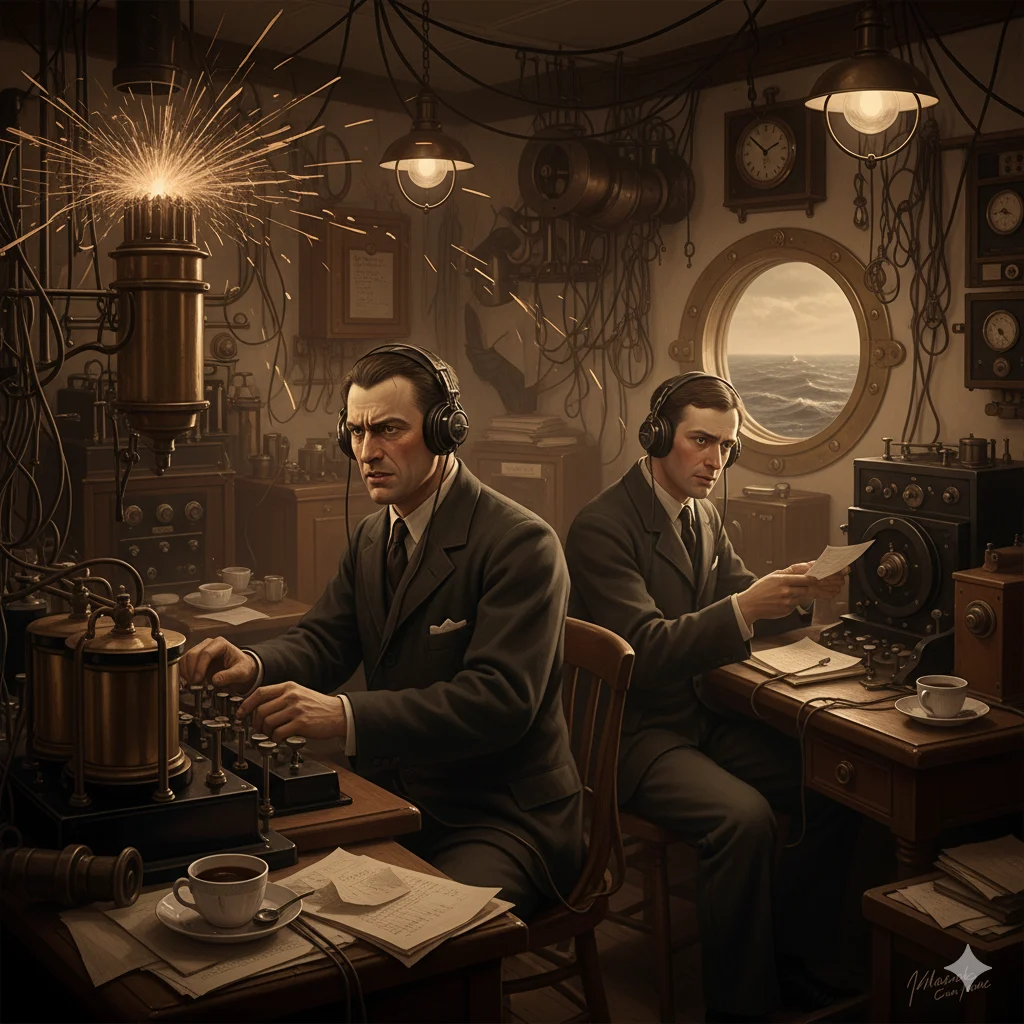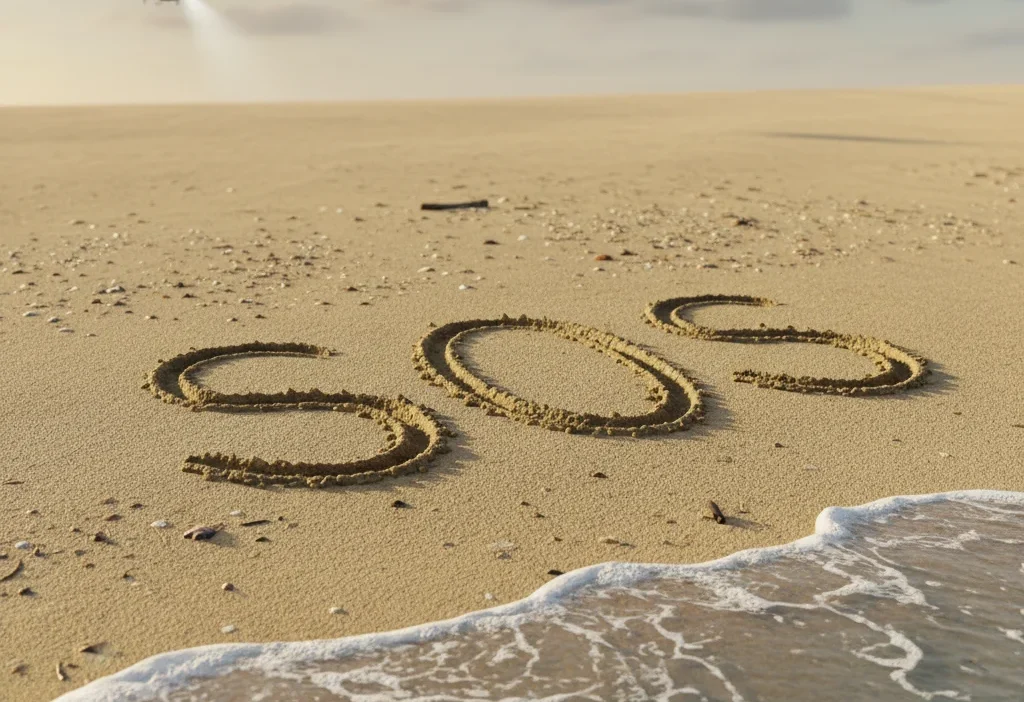If you’ve ever watched a shipwreck movie or seen a cartoon where someone writes “SOS” in the sand hoping to be rescued, you’ve probably assumed it stands for “Save Our Ship” or “Save Our Souls.” But here’s the twist — that’s not actually true. The meaning of SOS isn’t an acronym at all.
This small yet powerful combination of letters has a fascinating history rooted in maritime communication, global emergency systems, and even today’s smartphone technology. So, what does SOS really mean, and how did it become the universal symbol for help?
Let’s dive in.
What Does SOS Mean?
According to Merriam-Webster and Oxford Dictionary, SOS is an internationally recognized distress signal, first used by ships to call for help during emergencies. In simple terms, it means “I need help immediately.”
Unlike common abbreviations such as ASAP (as soon as possible) or FYI (for your information), SOS doesn’t stand for any words. It’s not short for “save our souls” or “save our ship.” Those meanings were added later as convenient phrases to help people remember the pattern.
In truth, the SOS signal was chosen for its simplicity and clarity in Morse code — the language of dots and dashes that early radio operators used to send messages.
The Origins of SOS: A Code Born from the Sea
Back in the early 1900s, ships sailing across the oceans needed a fast, unmistakable way to signal distress. The German government first introduced SOS in 1905 as part of their national radio regulations.
When written in Morse code, SOS looks like this:
. . . – – – . . .

That’s three short dots, three long dashes, and three short dots again — a simple, symmetrical pattern that’s hard to misread, even in panic.
By 1908, the International Radiotelegraph Convention officially adopted SOS as the global distress signal. It became a universal code understood by sailors, radio operators, and rescuers worldwide — no translation needed.
Why SOS Was Chosen as the Universal Signal
Before SOS, different countries used different emergency signals. The British preferred CQD, which stood for “Come Quick, Danger.” But the problem was that CQD could be confused with normal radio chatter.
The SOS pattern, however, was:

- Simple — easy to tap or transmit even under stress
- Distinct — no other message looked like it
- Symmetrical — easy to recognize visually and aurally
- Universal — not based on any specific language
When the Titanic famously sank in 1912, the ship’s radio operators actually sent both CQD and SOS signals, marking a turning point in maritime communication. After that tragic event, SOS became the global standard for distress.
Interestingly, SOS also reads the same backward and upside down, making it perfect for writing on sand, snow, or rocks — visible from any direction.
How SOS Evolved Beyond the Sea
Even though Morse code has largely faded away, SOS has never disappeared. It’s become a part of everyday culture, language, and even technology. Let’s explore how.
1. SOS in Pop Culture
From ABBA’s hit song “SOS” to Rihanna’s 2006 single, the signal has long been used in music as a metaphor for heartbreak and emotional rescue.
In movies and cartoons, the SOS symbol is often shown scrawled in the sand, flashing on screens, or shouted through radios during dramatic moments — instantly understood by audiences everywhere.
It’s become more than a maritime code — it’s now a universal cry for help, even in casual conversation.

2. SOS in Everyday Language
These days, people often text or post “SOS!” as a way of saying:
- “Help me out!”
- “I’m stuck in a bad situation!”
- “Someone save me from this!”
It can be serious or playful, depending on the context. For example:
“SOS! My Wi-Fi just died before the Zoom meeting.”
“SOS! I spilled coffee on my white dress.”
While it’s used humorously most of the time, it still carries that emotional weight of asking for help — even if it’s not life-threatening.
3. SOS in Medicine
Here’s something most people don’t know — SOS also appears in medical prescriptions.
In this context, SOS stands for the Latin phrase “si opus sit,” which means “if there is a need” or “as needed.”
For example, a doctor might prescribe a medication that says:
“Take 1 tablet SOS for pain.”
This doesn’t mean call for help — it means take the medicine only when necessary.
4. SOS in Technology
Modern smartphones have redefined how we use SOS in emergencies.
On both iPhones and Android devices, the Emergency SOS feature allows users to quickly call for help — even when there’s no cellular signal.
Here’s how it works:
- When activated, the phone automatically contacts emergency services.
- It sends your location to preset emergency contacts.
- Some devices can even detect car crashes or falls and send an SOS automatically.
This evolution of SOS shows how a signal from the early 1900s has adapted to the digital age while keeping its purpose the same — saving lives.
The Visual and Symbolic Power of SOS
Part of SOS’s lasting power lies in its simplicity and visual balance.
Because it’s a palindrome and ambigram, it can be read the same way backward or upside down. That makes it easy to carve into sand, flash with light, or draw in snow — ensuring rescuers see it no matter where they’re coming from.
In modern symbolism, SOS represents hope, resilience, and the human will to survive. It’s not just a code — it’s a reminder that help is always possible, no matter how dire things seem.
How to Use the SOS Signal Properly
If you ever find yourself in an emergency situation without modern tools, knowing how to signal SOS could save your life.
Here are a few methods:
- Light Signals – Flash a torch or mirror: three short flashes, three long, three short.
- Sound Signals – Tap or whistle in the same dot-dash-dot pattern.
- Visual Signs – Write “SOS” using rocks, sticks, or snow in a visible area.
- Text/Phone – Use your smartphone’s SOS feature to call emergency services automatically.
The key is repetition — transmit or display the signal until help arrives.
FAQs About SOS Meaning
Q1. Does SOS really stand for “Save Our Ship”?
No. While many people think so, SOS doesn’t stand for any words. It was chosen purely for its clear and simple Morse code pattern.
Q2. When was SOS first used?
SOS was introduced by Germany in 1905 and became the official international distress signal in 1908.
Q3. What did the Titanic use — CQD or SOS?
Both! The Titanic’s radio operators sent CQD and SOS messages during the disaster, helping establish SOS as the global standard.
Q4. Is SOS still used today?
Yes, though not with Morse code. It’s used in digital systems, smartphone features, and even emergency beacons (EPIRBs).
Q5. How can I send an SOS from my phone?
On iPhone, press and hold the side and volume buttons to trigger Emergency SOS. On Android, the setting varies but typically involves pressing the power button multiple times.
Final Thoughts: The Timeless Meaning of SOS
From Morse code beeps across the sea to high-tech signals from smartphones, SOS has stood the test of time as humanity’s universal cry for help.
Its beauty lies in its simplicity — three dots, three dashes, three dots — but its message carries profound weight: someone needs help.
So whether you’re studying maritime history, texting your friends for rescue from a boring event, or activating your phone’s emergency mode, remember: SOS is not just a code. It’s a symbol of survival, unity, and hope.

William Blake is a poet, painter, and mystic whose visionary works merged art and spirituality. His deep symbolism, rooted in imagination and divine inspiration, continues to inspire seekers of truth. Blake believed that every symbol is a doorway to higher understanding and inner awakening.



